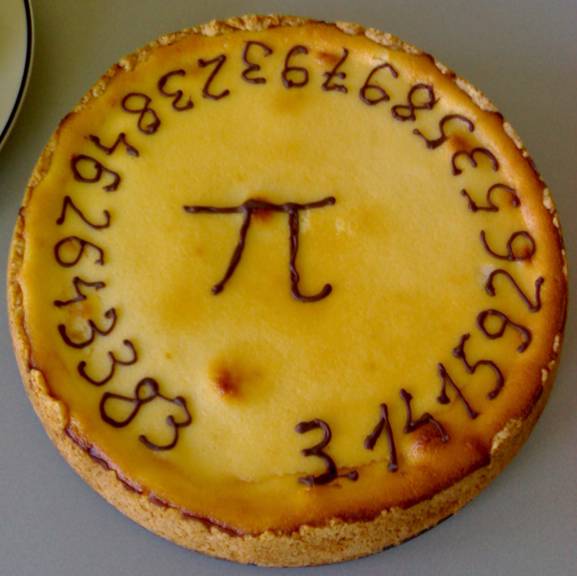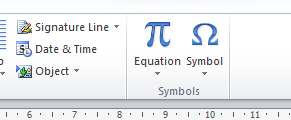
Right? Maybe not. Not many numbers have their own symbol (π), appear on cool t-shirts, are trademarked or have their own movie (this one not this one) and their own day. OK there is “e-day” for Euler’s constant but hey, March 14 is Albert Einstein’s (physicist), Johan Strauss’ (composer of the Radetzky March and other great things) and Eugene Cernan’s (last man on the moon) birthday as well. Finally, if you open a Word document and go to Insert tab on your right you will see this:
If Pi was a person, it must have been a pretty big name to have all these honours.
Pi is the ratio of a circle’s circumference over its diameter and has been around for 4000 years which makes it more ancient than ancient Greece. Trying to figure out the area covered by a circle, the Babylonians were the first (that we know) to come close to it. Followed by the Egyptians and Greeks who by 250 BC knew they were more likely to approximate it than measure it to detail. Evidence of its universality, independent from the above attempts to measure pi have been discovered in China around 430 AD.
To honour the day, here are my favourite 3 facts of pi:
- The number of digits currently memorised by the pi champion is between 70,000 and 100,000 of its more than 13 trillion These are approximately 10-20 hours of reciting digits (poor referees).
- There is a website where you can find where your birthday is in pi.
- The obsession with finding patterns in numbers such as pi is linked to the human need of adding meaning to things.
And 14 words for closure:
Cromwell once banned pi.
Mince pie.
Happy Pi Day!
By Dr Tasos Kitsos, Research Fellow, City-REDI, University of Birmingham
To sign up for our blog mailing list, please click here.
Disclaimer:
The views expressed in this analysis post are those of the authors and not necessarily those of City-REDI or the University of Birmingham
